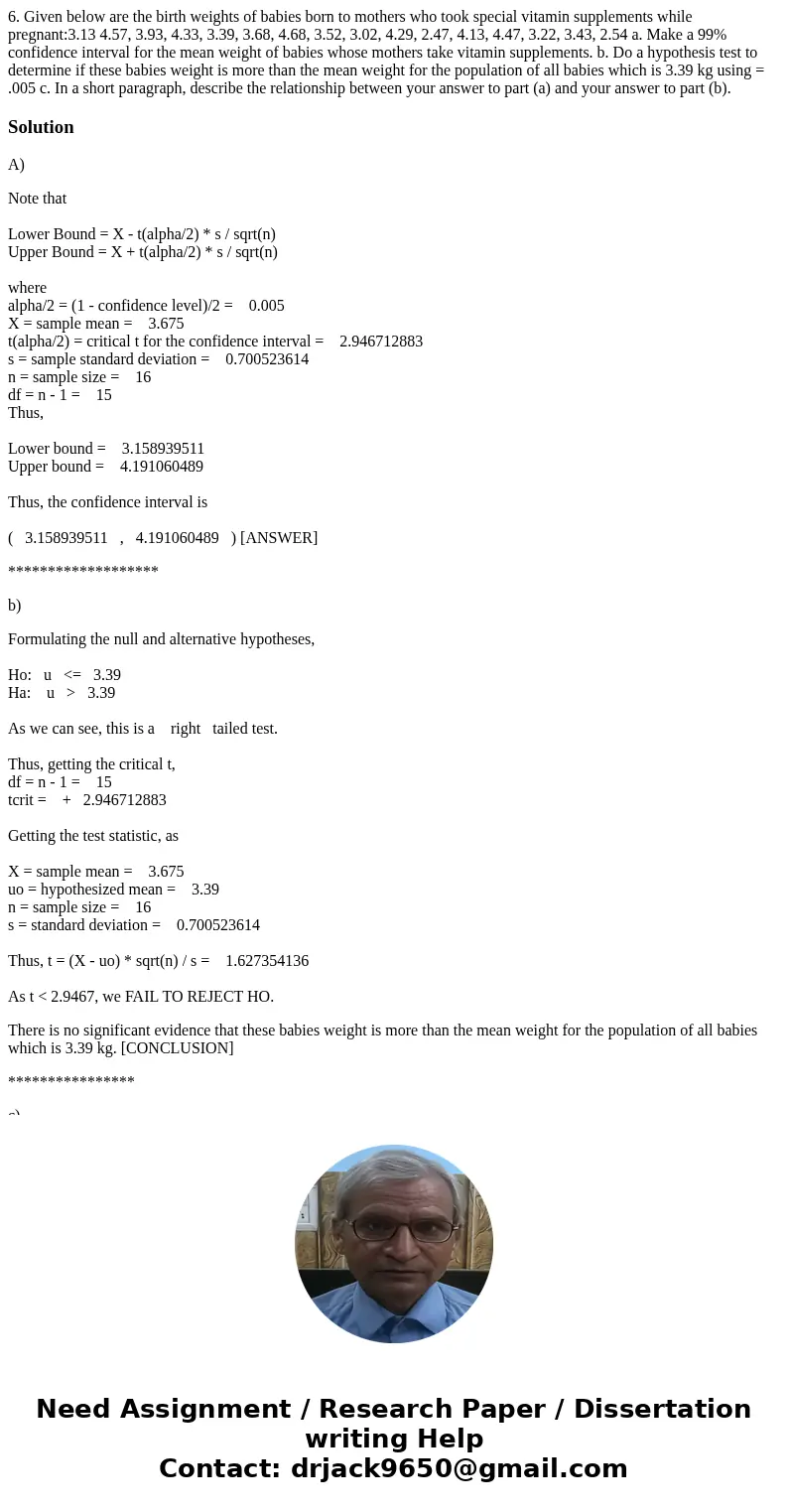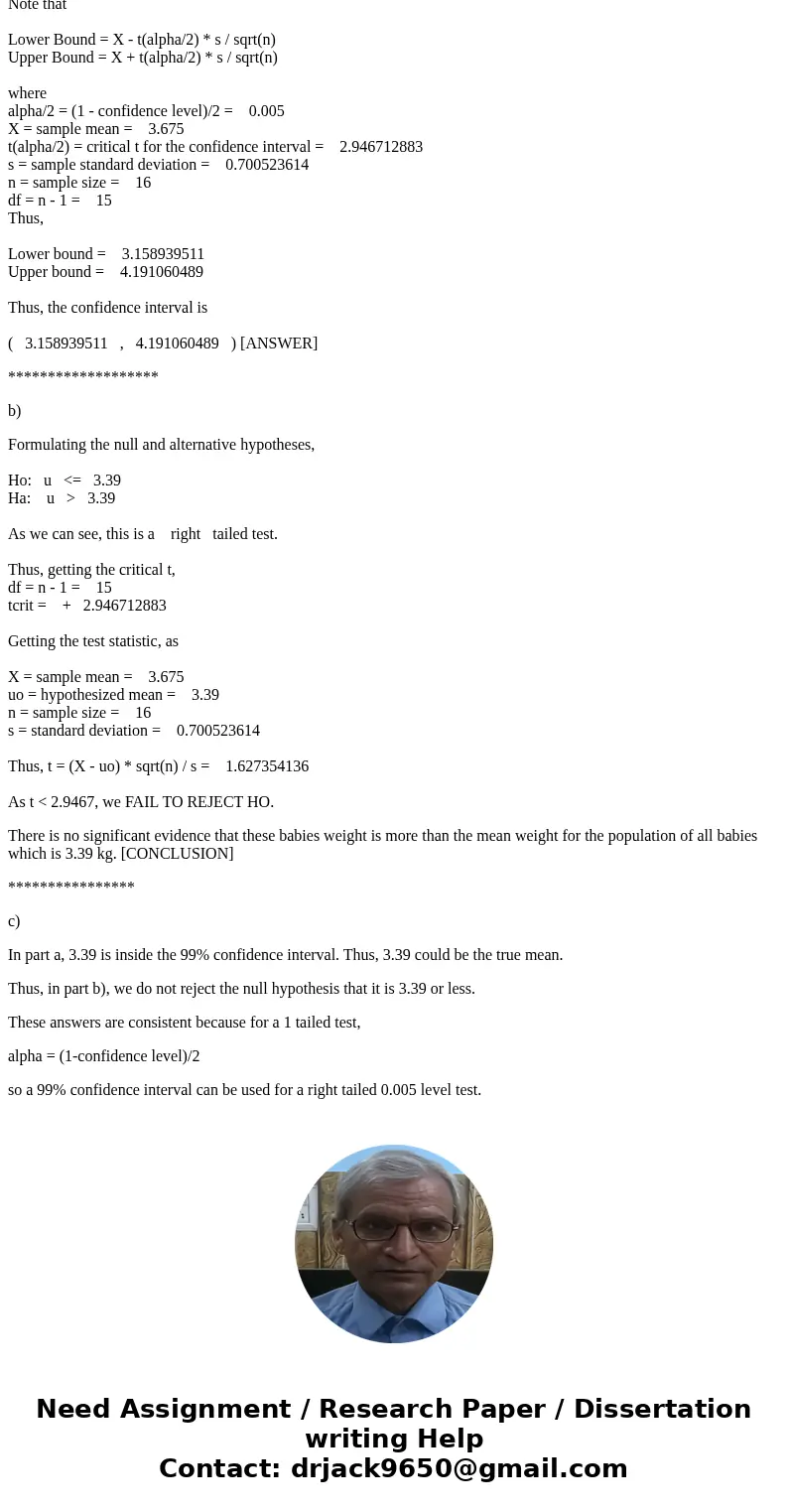6 Given below are the birth weights of babies born to mother
6. Given below are the birth weights of babies born to mothers who took special vitamin supplements while pregnant:3.13 4.57, 3.93, 4.33, 3.39, 3.68, 4.68, 3.52, 3.02, 4.29, 2.47, 4.13, 4.47, 3.22, 3.43, 2.54 a. Make a 99% confidence interval for the mean weight of babies whose mothers take vitamin supplements. b. Do a hypothesis test to determine if these babies weight is more than the mean weight for the population of all babies which is 3.39 kg using = .005 c. In a short paragraph, describe the relationship between your answer to part (a) and your answer to part (b).
Solution
A)
Note that
Lower Bound = X - t(alpha/2) * s / sqrt(n)
Upper Bound = X + t(alpha/2) * s / sqrt(n)
where
alpha/2 = (1 - confidence level)/2 = 0.005
X = sample mean = 3.675
t(alpha/2) = critical t for the confidence interval = 2.946712883
s = sample standard deviation = 0.700523614
n = sample size = 16
df = n - 1 = 15
Thus,
Lower bound = 3.158939511
Upper bound = 4.191060489
Thus, the confidence interval is
( 3.158939511 , 4.191060489 ) [ANSWER]
*******************
b)
Formulating the null and alternative hypotheses,
Ho: u <= 3.39
Ha: u > 3.39
As we can see, this is a right tailed test.
Thus, getting the critical t,
df = n - 1 = 15
tcrit = + 2.946712883
Getting the test statistic, as
X = sample mean = 3.675
uo = hypothesized mean = 3.39
n = sample size = 16
s = standard deviation = 0.700523614
Thus, t = (X - uo) * sqrt(n) / s = 1.627354136
As t < 2.9467, we FAIL TO REJECT HO.
There is no significant evidence that these babies weight is more than the mean weight for the population of all babies which is 3.39 kg. [CONCLUSION]
****************
c)
In part a, 3.39 is inside the 99% confidence interval. Thus, 3.39 could be the true mean.
Thus, in part b), we do not reject the null hypothesis that it is 3.39 or less.
These answers are consistent because for a 1 tailed test,
alpha = (1-confidence level)/2
so a 99% confidence interval can be used for a right tailed 0.005 level test.


 Homework Sourse
Homework Sourse